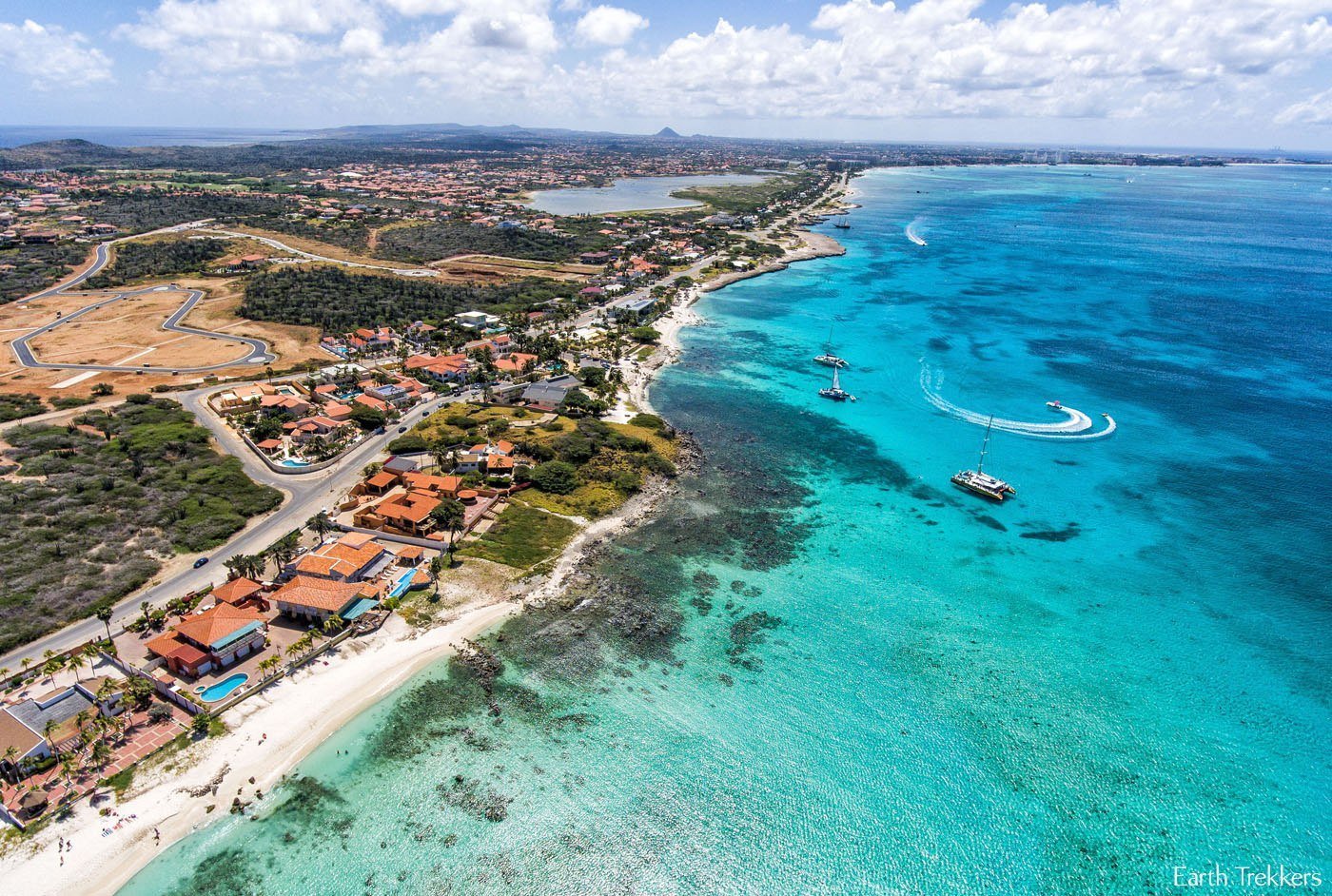


Oranjestad, Noord and Santa Cruz have merged into one near continuous urban area covering the north of the island. Administratively, the city has been split in two districts: East and West. From the 1960s onwards, tourism became more important and has resulted in the creation of a large hotel zone. The establishment of an oil refinery by Lago Oil and Transport Company not only resulted in a population increase, but a significant increase in the prosperity of the island. The oil industry discovered Aruba in 1924. During that period interest in Aruba increased due to the discovery of alluvial gold deposits. It was named after the first King William I of the Netherlands. Oranjestad became the capital city of the island in 1824. Nearby was the fishing village of Rancho. The town had two churches: one Catholic and one Protestant. Fort Zoutman was the main building around which 200 small houses had been erected. The total population of the island in 1816 was estimated at 1,732 most of whom were farmers. In the early 19th century, Oranjestad was like a village, because Aruba had no large plantations or international traders. Initially, the town had no official name, being known only as the town on the Bay of Horses ( Paardenbaai in Dutch), a place from which horses were raised and exported to neighbouring Curaçao and Jamaica. In fact, although matters such as aviation, customs, immigration, communications and other internal matters are handled autonomously by the Aruban government the Kingdom is still responsible for defense, citizenship and foreign affairs.The town was built around Fort Zoutman shortly after it was built in 1796. Legal jurisdiction lies with the Gerecht in Eerste Aanleg (Court of First Instance) on Aruba, the Gemeenschappelijk Hof van Justitie van Aruba, Curaçao, Sint Maarten, en van Bonaire, Sint Eustatius en Saba (Joint Court of Justice of Aruba, Curaçao, Sint Maarten, and of Bonaire, Sint Eustatius and Saba) and the Hoge Raad der Nederlanden (Supreme Court of Justice of the Netherlands).Īlthough Aruba has a separate status, it still retains strong economic, cultural, political and defense ties with Holland and her "sister" islands. The party (or parties) obtaining legislative majority are asked by the Governor to form a 7- member Council of Ministers vested with executive powers and headed by a Prime Minister. Each member holds their seats until Parliament is dissolved which is every four years by a general election. The Aruban parliament consists of 21 members elected for a four-year term by proportional representation. Legislative, executive and judicial powers are vested in parliament which is housed in Aruba's capital, Oranjestad. The King of the Netherlands appoints the governor of Aruba who holds office for a 6-year term, and acts as his representative. Meanwhile Curaçao and Sint Maarten became constituent countries within the Kingdom of the Netherlands, along the lines of Aruba, which had separated from the Netherlands Antilles in 1986.Īruba has its own constitution, based on Western democratic principles. After dissolution, the "BES islands" of the Dutch Caribbean - Bonaire, Sint Eustatius and Saba - became the Caribbean Netherlands, special municipalities of the Netherlands - a structure that only exists in the Caribbean. However the Netherlands Antilles was dissolved in 2010. The Kingdom then consisted of three constituents: Holland, Aruba and the Netherlands Antilles (the remaining 5 islands). On January 1st, 1986, Aruba became a separate entity within the Kingdom of the Netherlands. Historically, Aruba had been part of the Netherlands Antilles, a six island federation, which also included Bonaire, Curaçao, St.Maarten, Saba and St.


 0 kommentar(er)
0 kommentar(er)
